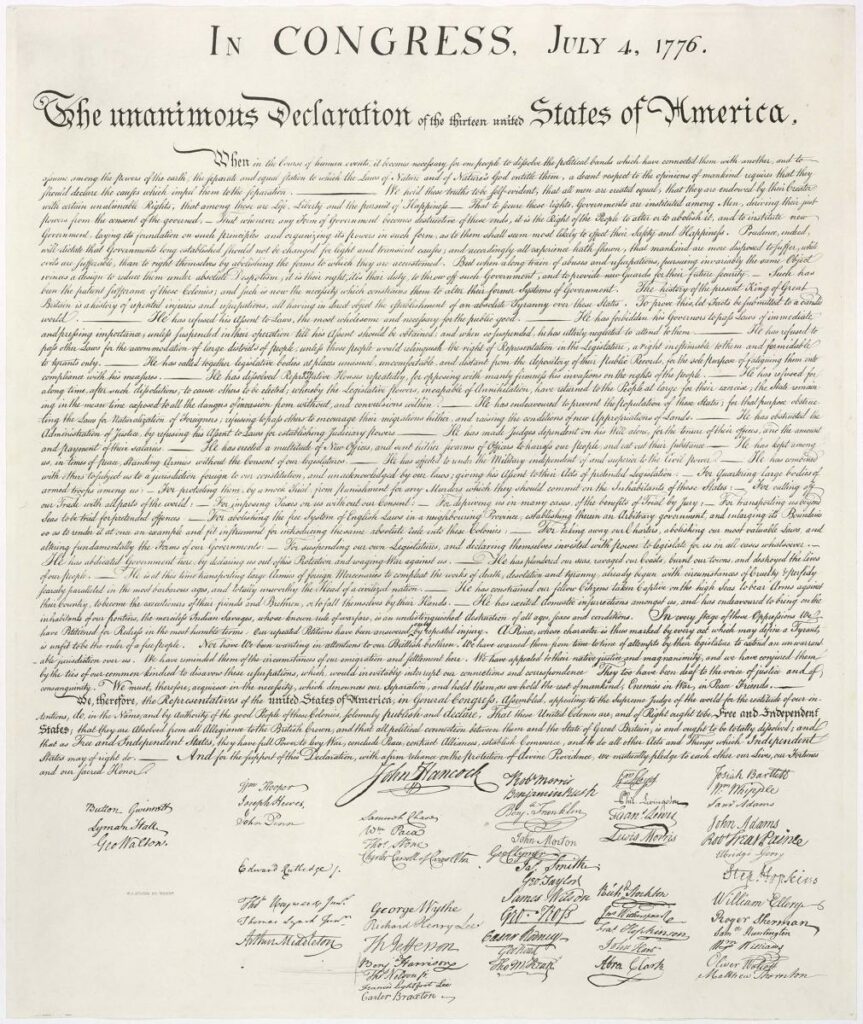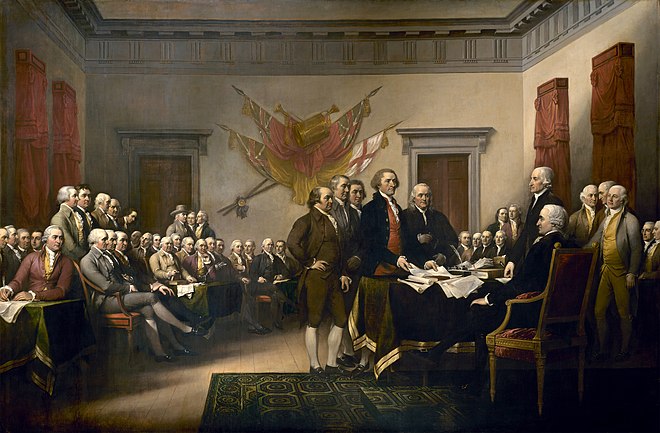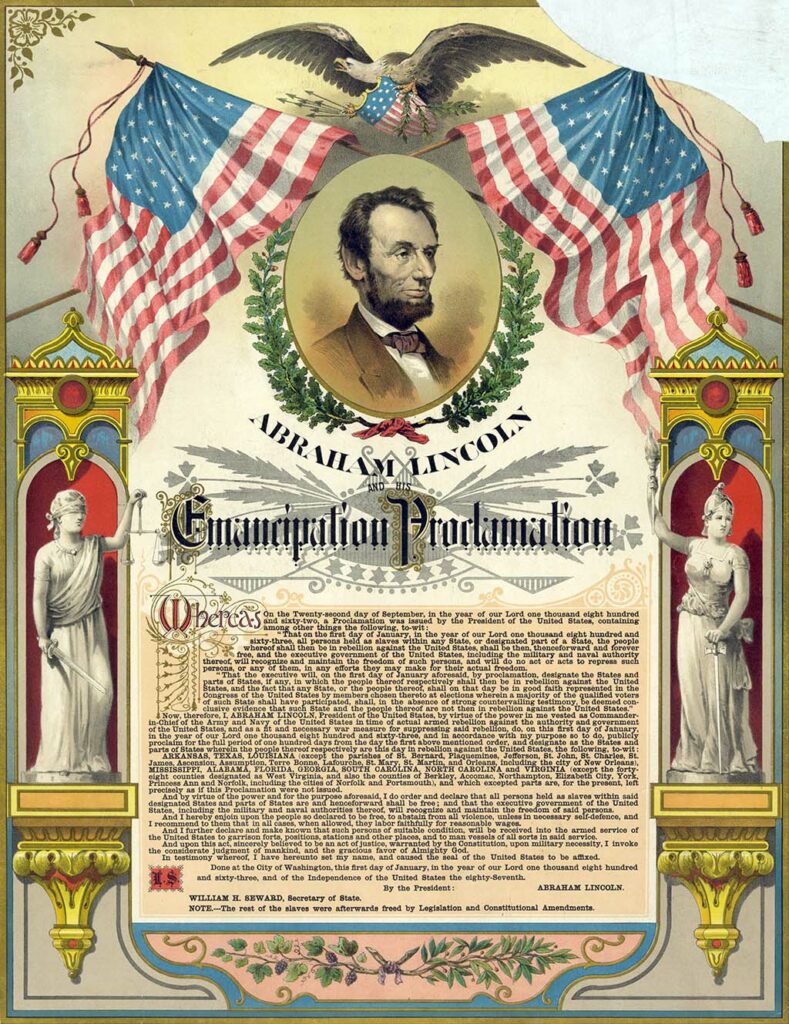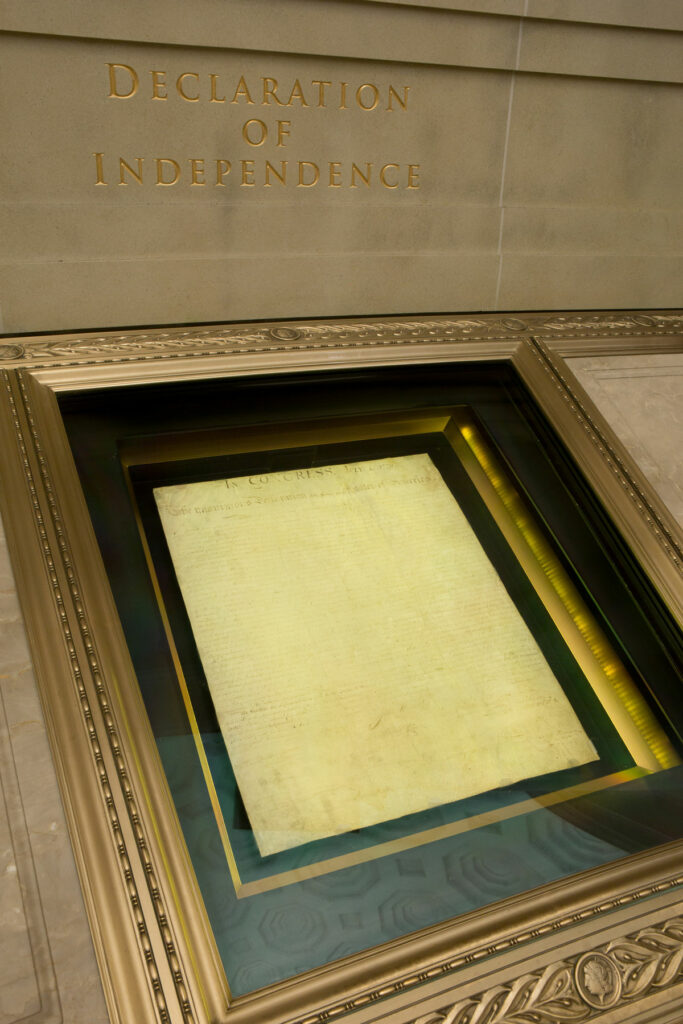Table of Contents
Introduction: Declaration of Independence
What is the Declaration of Independence?
At the heart of American history stands the Declaration of Independence, a foundational document that serves as the bedrock of the nation’s identity. Crafted during a pivotal period in 1776, the Declaration marked the formal break between the thirteen American colonies and Great Britain, declaring the colonies’ intent to be independent sovereign states. Authored primarily by Thomas Jefferson, with input from other committee members including John Adams and Benjamin Franklin, the Declaration of Independence is not merely a historical artifact but a profound proclamation of the inherent rights of individuals and the justifications for self-governance.
The Declaration articulates the guiding principles that laid the groundwork for the United States of America. It asserts that all individuals are endowed with unalienable rights, including life, liberty, and the pursuit of happiness. Moreover, it proclaims that governments derive their just powers from the consent of the governed, highlighting the revolutionary concept that governments exist to protect the rights of the people. Understanding the historical context and the motivations behind this pivotal document is crucial to appreciating the profound impact it has had on shaping the course of American history.

Drafting Process
The crafting of the Declaration of Independence was a collaborative effort involving the Continental Congress, a body of representatives from the thirteen colonies. Thomas Jefferson, a delegate from Virginia, was tasked with composing the document. Drawing on Enlightenment ideals and the philosophical underpinnings of John Locke, Jefferson eloquently expressed the grievances of the colonies and asserted their right to independence. The drafting process involved multiple revisions and consultations with fellow committee members, reflecting the gravity of the decision to declare independence.
The finished document was presented to the Continental Congress on June 28, 1776, and after further deliberations and edits, it was officially adopted on July 4, 1776. The adoption of the Declaration of Independence marked a momentous step in the American Revolution, solidifying the resolve of the colonies to break away from British rule.

Significance and Legacy
The signing of the Declaration of Independence on July 4, 1776, symbolized the formal embrace of independence by the representatives of the thirteen colonies. The iconic signatures of the Founding Fathers, including John Hancock’s prominent and bold signature, conveyed a collective commitment to the principles enshrined in the document. The Declaration immediately became a rallying cry for the American cause, inspiring patriots and serving as a beacon of hope during the challenging years of the Revolutionary War.
The significance of the Declaration of Independence extends far beyond its immediate impact. It laid the philosophical groundwork for the Constitution and Bill of Rights, shaping the legal and political framework of the United States. Its words, declaring that all men are created equal, have resonated throughout history, influencing movements for civil rights and social justice. In present times, the Declaration remains an enduring symbol of American ideals and continues to inspire conversations about liberty, equality, and the pursuit of happiness.

Impact on American History
The impact of the Declaration of Independence on American history is immeasurable. Its words echoed not only in the halls of the Continental Congress but reverberated across the globe, signaling the birth of a new nation founded on principles of self-determination and individual rights. The document served as a catalyst for unity among the colonies, galvanizing support for the revolutionary cause. Its publication and dissemination sparked a sense of identity and purpose among the colonists, strengthening their resolve to pursue independence.
The influence of the Declaration extended to the formation of the United States. As the newly formed nation grappled with the task of establishing a government, the principles articulated in the Declaration guided the drafting of the Constitution. The idea that governments derive their just powers from the consent of the governed found a central place in the democratic governance structure of the United States.

Celebrating Independence
The Fourth of July, celebrated annually as Independence Day in the United States, stands as a testament to the enduring legacy of the Declaration of Independence. On this day, Americans across the nation commemorate the adoption of the document with festivities, parades, and fireworks. The Declaration is often read aloud, reaffirming the nation’s commitment to the ideals of freedom and self-governance. The celebration of Independence Day serves as a collective acknowledgment of the profound significance of the document and the principles it enshrines.

Preserving and Protecting the Declaration
Preserving the physical document of the Declaration of Independence is an ongoing endeavor to ensure that future generations can witness this piece of history. The original document, housed in the National Archives in Washington, D.C., is carefully preserved to protect it from deterioration. Preserving the Declaration goes beyond its physical form; it involves upholding the principles it espouses. Efforts to protect individual rights, promote equality, and ensure justice contribute to the ongoing legacy of the Declaration.

In the annals of history, the Declaration of Independence stands as a beacon of human aspiration, a testament to the enduring power of words to shape destinies. Crafted in the crucible of revolution, its eloquent prose transcends time, echoing through the corridors of centuries and resonating with the spirit of liberty. The journey we’ve undertaken in this exploration of the Declaration has unveiled not just a document, but the soul of a nation, etched in ink and sealed with the resolve of visionary men.
As we reflect on the profound impact of the Declaration, it becomes clear that its significance extends far beyond the parchment on which it is written. It is a living testament to the unyielding pursuit of freedom, a foundational pillar upon which the United States was built. The principles articulated by Thomas Jefferson and the Founding Fathers continue to guide the nation, offering a moral compass that has steered it through times of turmoil and triumph.
The Declaration of Independence is not a relic of the past; it is a living force that reverberates in the hearts of every citizen. Its call for equality, justice, and the pursuit of happiness remains an unfinished promise, urging each generation to strive for a more perfect union. As we celebrate Independence Day, let us not only revel in the festivities but also reflect on the responsibilities that come with the legacy bequeathed to us by those who penned their names on that historic parchment.
In our collective endeavor to build a more just and equitable society, let us draw inspiration from the courage of those who declared independence against formidable odds. The Declaration of Independence is more than a historical artifact; it is a challenge and an invitation to contribute to the ongoing narrative of freedom. May its words continue to echo in the hearts and minds of all who cherish the ideals of liberty, ensuring that the flame ignited in 1776 remains ablaze for generations to come.
For More Information About the Declaration of Independence See This Link!
United States Declaration of Independence – Wikipedia


